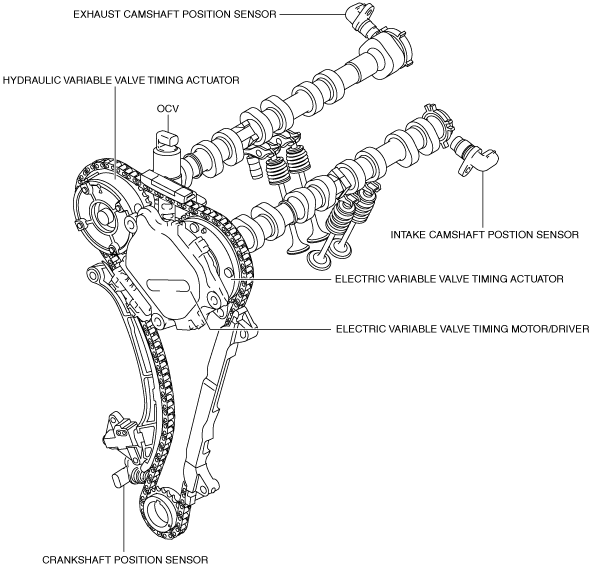 |
am3uun00002434
VARIABLE VALVE TIMING MECHANISM [SKYACTIV-G 2.0, SKYACTIV-G 2.5]
id0110h3002000
Outline
Structural View
am3uun00002434
|
Structure
|
Part name
|
Function
|
|
Hydraulic variable valve timing actuator
|
The hydraulic variable valve timing actuator operates according to the hydraulic pressure and changes the phases of the exhaust camshaft.
|
|
Electric variable valve timing actuator
|
The electric variable valve timing actuator changes the phases of the intake camshaft.
|
|
Electric variable valve timing motor/driver
|
Operates the electric variable valve timing actuator based on the signals from the PCM.
|
|
OCV
|
Operated by current (duty signal) from the PCM. Controls the hydraulic oil passages to the variable valve timing actuator.
|
|
Intake camshaft position sensor
|
Sends the intake camshaft position signal to the PCM.
|
|
Exhaust camshaft position sensor
|
Sends the exhaust camshaft position signal to the PCM.
|
|
Crankshaft position sensor
|
Sends the crankshaft position signal to the PCM.
|
Operation
At engine start
Light/medium load range
High load range